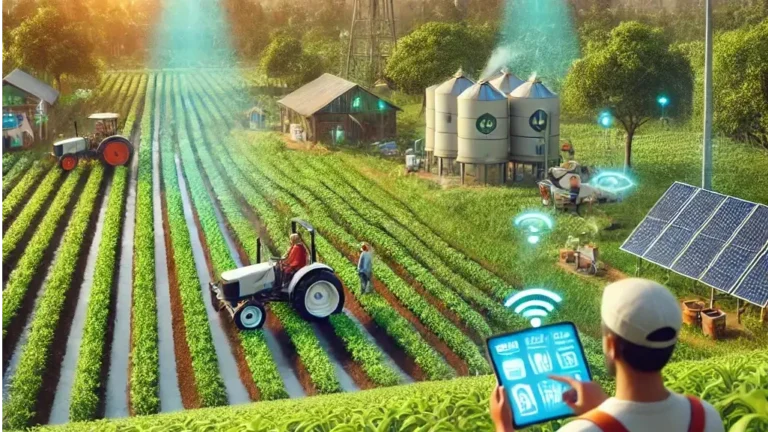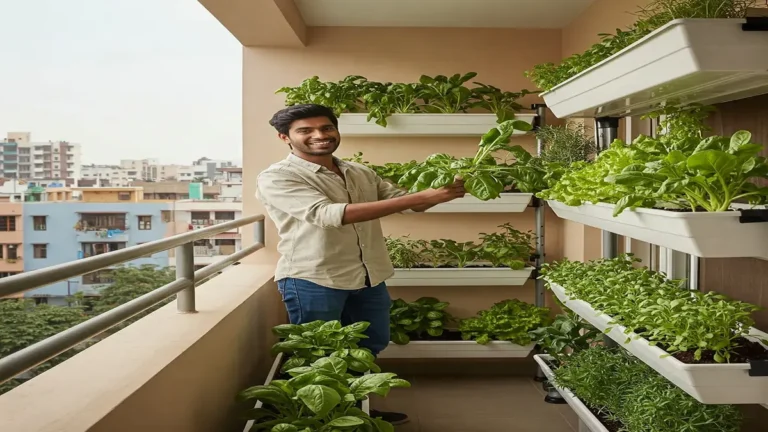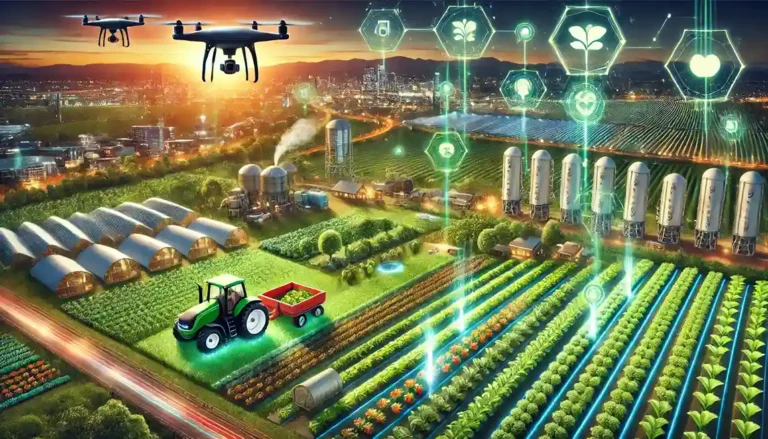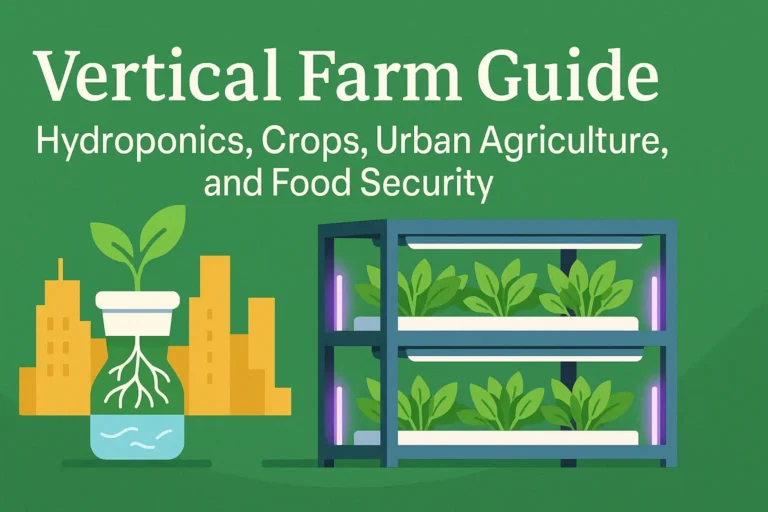Challenges Hindering AI & IoT Adoption in Indian Agriculture
AI and IoT have the potential to revolutionize Indian farming, but the reality is that only about 15% of farmers are using these advanced technologies. So, why is not every farmer making the switch?
1. High Cost of Technology
AI-driven tools and IoT sensors don’t come cheap. A basic IoT sensor kit costs ₹15,000–₹20,000, which is too expensive for small-scale farmers who operate on tight budgets.
✅ Solution: Government subsidies are making technology more accessible—for example, Kisan Drones are available at a 75% subsidy, significantly reducing costs.
2. Limited Digital Literacy
Many farmers hesitate to adopt AI and IoT tools because they are not comfortable using digital platforms or mobile applications. Some are even skeptical about whether these technologies truly benefit them.
✅ Solution: Voice-based AI assistants, like Microsoft’s AI-for-Agri in Madhya Pradesh, are making it easier for farmers to access information in their local language without needing to type or navigate complex apps.
3. Poor Internet Connectivity in Rural Areas
IoT-based farming relies on stable internet connections, but only 35% of rural India has reliable 4G access. Without proper connectivity, even the most advanced smart farming tools become useless.
✅ Solution: The BharatNet project aims to provide fiber-optic internet to 600,000 villages by 2025, improving connectivity and making IoT-based precision farming a reality.
4. Lack of Localized AI Solutions
Most AI-driven farming solutions are built for large-scale farms in developed countries, where farming conditions, soil health, and climate are completely different from India. This makes the technology less effective for small Indian farms.
✅ Solution: More India-specific AI models are needed—like Krishi AI, which provides crop recommendations based on regional climate data, soil type, and pest threats.
5. Resistance to Change & Traditional Mindset
For generations, Indian farmers have relied on experience and traditional methods to grow crops. Many don’t trust AI-generated recommendations, believing that human judgment is better than machine suggestions.
✅ Solution: Demonstration farms and success stories of farmers using AI & IoT effectively can help build trust and encourage adoption. The more farmers see real benefits, the more they will be willing to adopt these technologies.
The Future of AI & IoT in Indian Farming: A Technological Revolution in Agriculture
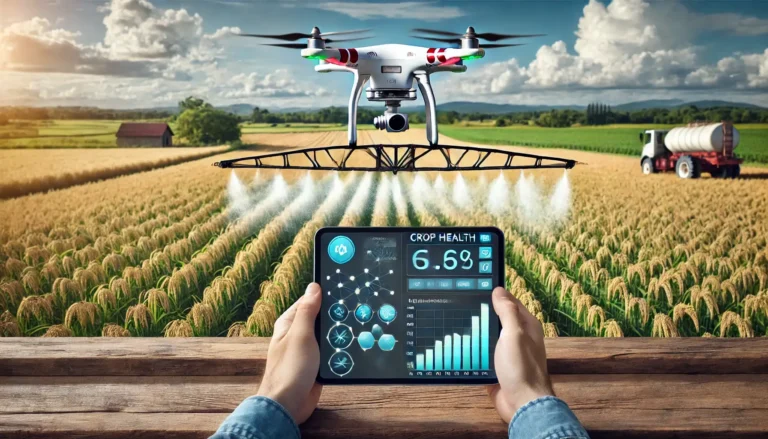
India’s agricultural landscape is undergoing a digital transformation, with AI (Artificial Intelligence) and IoT (Internet of Things) technologies reshaping traditional farming methods. The integration of smart technologies is helping farmers reduce crop losses, optimize inputs, boost productivity, and enhance sustainability.
With the Indian government pushing for digital agriculture and agri-tech startups innovating at an unprecedented pace, the future looks promising. But what exactly does this mean for Indian farmers? Let’s break it down.
AI & IoT in Indian Agriculture: The Road Ahead
1. Government Initiatives: India’s Push for AI in Farming
The Indian government recognizes the potential of AI and IoT in modernizing agriculture. Several key initiatives have been launched to encourage digital farming solutions:
🔹 Digital Agriculture Mission (2021-2025): This initiative promotes AI, blockchain, and IoT to improve farm productivity and farmer income. It focuses on data-driven agriculture, precision farming, and better supply chain management.
🔹 AgriStack: A centralized digital database for farmers, providing AI-powered advisory services, market linkages, and credit access.
🔹 Kisan Drone Yojana: Promoting the use of AI-driven drones for pesticide spraying, land mapping, and precision farming.
🔹 National e-Governance Plan in Agriculture (NeGPA): Encourages agri-tech adoption, with a focus on AI-based soil health monitoring and weather forecasting tools.
These policies are paving the way for a tech-driven revolution in Indian farming.
2. AI & IoT Startups Transforming Indian Agriculture
Several Indian agri-tech startups are at the forefront of this transformation, bringing AI-driven insights and IoT-based precision farming solutions to the fields. Let’s take a look at some of the biggest game changers:
🌾 CropIn – AI-Powered Predictive Farming
Impact: Used by over 2 million farmers across India and abroad.
CropIn’s AI-driven platform helps farmers make real-time, data-backed decisions by analyzing crop health, weather patterns, and farm activities.
✅ Key Features:
✔ Satellite imagery & AI to monitor crop growth.
✔ Predictive analytics for yield forecasting.
✔ Smart farm advisory to minimize crop losses.
CropIn collaborates with governments, agribusinesses, and financial institutions, ensuring sustainable and profitable farming.
🌾 Fasal – IoT-Driven Smart Farming
Impact: Reduces water usage by up to 50% and cuts pesticide costs significantly.
Fasal deploys IoT sensors in farms to collect real-time data on soil moisture, humidity, and temperature, enabling farmers to:
✅ Key Features:
✔ Precision irrigation: Farmers water crops only when necessary, reducing waste.
✔ Disease & pest prediction: AI alerts farmers before outbreaks occur.
✔ Weather-based advisory: Helps farmers make informed decisions.
Fasal is particularly beneficial for horticulture and fruit farmers, making farming more efficient, cost-effective, and sustainable.
🌾 DeHaat – AI-Driven Agri-Supply Chain Optimization
Impact: Over 1.5 million farmers connected to markets, secured $200M in funding in 2024.
DeHaat is revolutionizing the agri-supply chain by providing farmers with:
✅ Key Features:
✔ AI-driven market linkage: Ensures fair prices and direct market access.
✔ Agri-input recommendations: Personalized advice on seeds, fertilizers, and pesticides.
✔ Logistics support: Ensures timely delivery of farm produce.
By eliminating middlemen and inefficiencies, DeHaat helps farmers increase their income and expand their reach.
What’s Next? AI & IoT Trends in Indian Agriculture 🚜
Indian agriculture is standing at the edge of a technological breakthrough. By 2025, farming won’t just be about soil, seeds, and monsoons—it will be powered by artificial intelligence (AI) and the Internet of Things (IoT). These innovations will change how farmers work, making agriculture smarter, more efficient, and less dependent on guesswork.
Here’s how AI and IoT are set to revolutionize Indian farming:
✅ 1. AI-powered “Farming as a Service” (FaaS) – Smart Farming on Rent!
What if farmers could rent advanced AI-driven tools instead of spending lakhs buying them? That’s exactly what Farming as a Service (FaaS) is bringing to the table.
Farmers will be able to hire AI-powered drones for spraying fertilizers, lease smart irrigation systems that adjust water flow based on real-time data, and access predictive analytics tools to know the best time to plant and harvest—all without needing to buy expensive equipment.
This means small and marginal farmers, who make up the majority in India, won’t be left behind in the tech race. They’ll get access to high-end tools without breaking the bank.
✅ 2. Blockchain + IoT for Food Safety – From Farm to Fork Transparency
Ever wondered if the “organic” vegetables you buy are actually organic? Or if your basmati rice is genuinely from Punjab? Blockchain and IoT are set to change that!
By embedding sensors in supply chains, farmers, distributors, and consumers will be able to track food from the farm to the plate—reducing fraud, ensuring fair pricing, and improving food safety.
Imagine scanning a QR code on a bag of wheat and seeing exactly where it was grown, what fertilizers were used, and when it was harvested. This will help farmers get fair prices for quality produce while preventing middlemen from diluting quality for profits.
✅ 3. AI-driven Weather Forecasts – No More Guesswork!
Indian farmers have always battled unpredictable weather, from unexpected droughts to untimely rains. But AI is about to change the game!
Instead of relying on generic weather updates, AI-driven weather prediction tools will provide real-time, hyperlocal forecasts. This means a farmer in Punjab will get rain predictions specific to his exact field, not just the district.
💡 How does this help?
- Farmers can plan irrigation and avoid overwatering.
- They can harvest at the right time before unexpected storms hit.
- Early warning systems will help reduce crop damage from floods, droughts, and pests.
FAQs (Frequently asked questions)
-
How does AI help small farmers in India?
AI helps small farmers by providing real-time insights through mobile apps and low-cost sensors. With just a smartphone, a farmer can check soil health, get weather alerts, and even detect crop diseases by uploading a picture. This saves time and money while improving productivity.
-
Are there any government schemes supporting AI and IoT in agriculture?
Yes! The Indian government has launched multiple schemes, including the Digital Agriculture Mission, PM-KISAN, and National e-Governance Plan in Agriculture (NeGPA) to promote AI and IoT adoption. These initiatives provide funding and training to help farmers embrace technology.
-
Can AI and IoT make Indian farming more sustainable?
Absolutely! By optimizing water use, reducing chemical dependency, and improving yield prediction, AI and IoT help farmers make better decisions that benefit both their income and the environment. Precision farming techniques also reduce wastage and improve soil health.
-
Are there AI-powered mobile apps available for Indian farmers?
Yes, several apps like Plantix, Kisan Suvidha, and AgriBazaar use AI to help farmers with crop health detection, market prices, and weather updates. These apps are free or low-cost and are becoming increasingly popular among Indian farmers.

